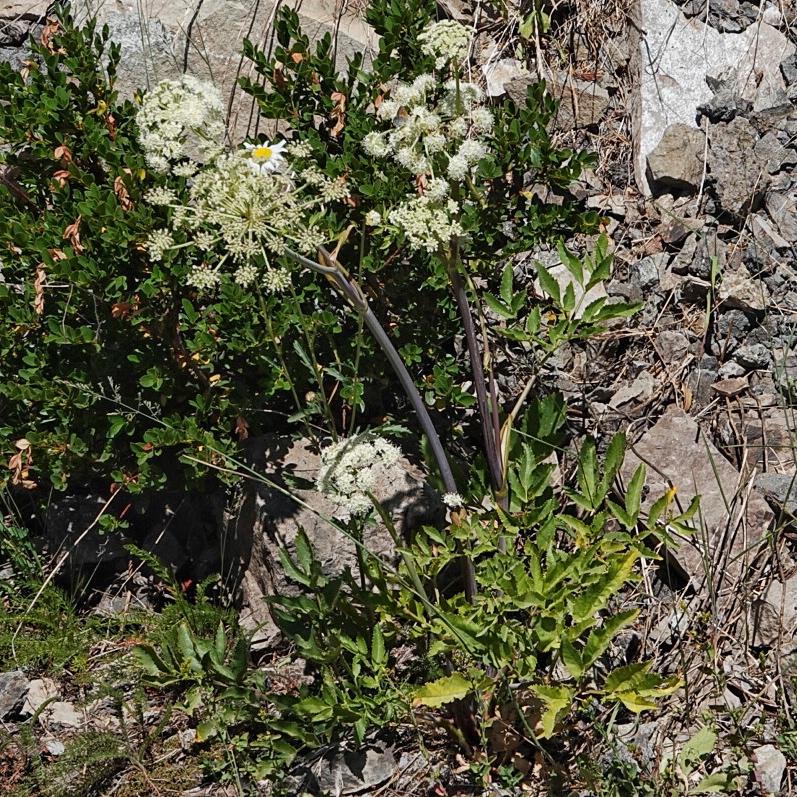
Just 3 weeks ago when I was up on the Ridge with Craig and William Sondergaard this species was just lifeless stalks with a cluster of basal leaves. When Pam and I were up there on Sunday almost all of them were in full flower. Mountain species can’t waste time when conditions are right! Although, strictly speaking, this isn’t a mountain plant species. They can be found all of the way down to sea level. And in rocky soil, at the top of a dry ridge, was rather an unusual place to find them. They tend to be a species of streambanks and the edges of wetlands.
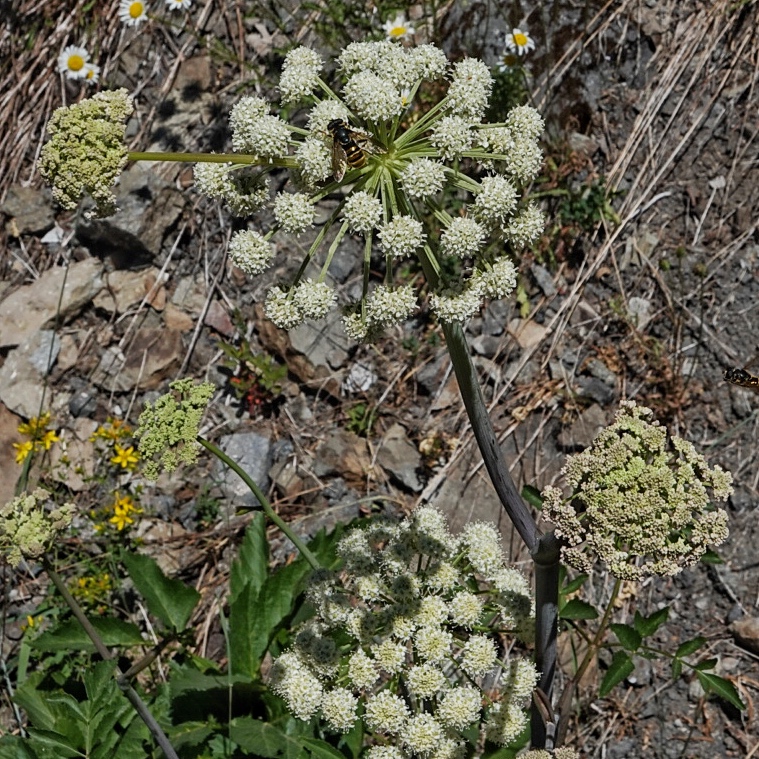
Though some indigenous cultures ate the leaves, the primary usages they had for this plant were medicinal or utilitarian. They used decoctions of the roots to treat headaches colds, sore throats, and eye problems, and as a purgative. But since this plant contains furocoumarins, which increase the skin’s sensitivity to light and may have other ill effects, caution should definitely be exercised when ingesting any parts of the plant.
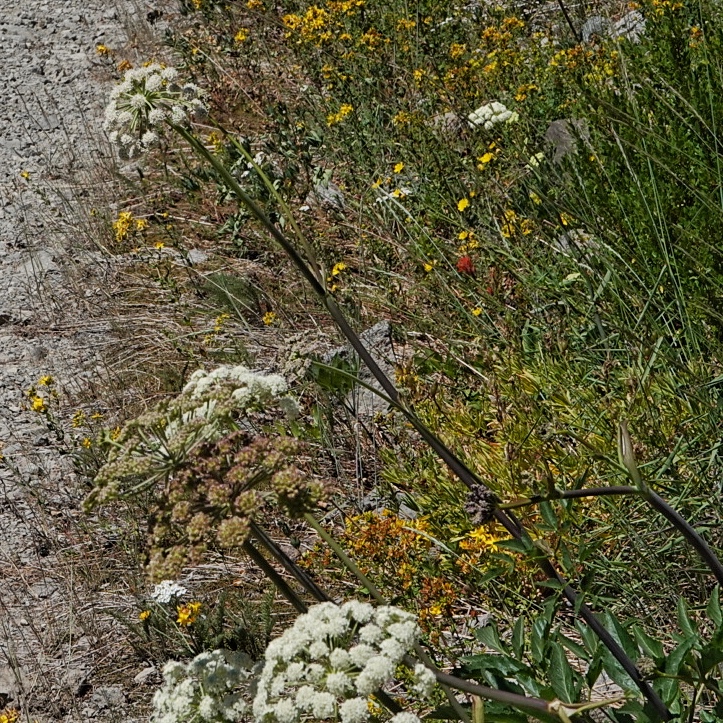
But there are many benign and useful purposes to which this plant has been put. The leaves were used, either chewed or raw, and sometimes in conjunction with devil’s club, as a deodorant, being rubbed over the body to mask the human smell. They don’t mention whether this was for hunting, or trying to impress a date. Also the hollow stalk was used as a straw, to make whistles, for children’s games, and to collect liquid spruce pitch, presumably as a gum. And, a usage rather terrifying in its specificity, they used the hollow stalk to breathe through when hiding underwater and waiting for danger, probably from humans, to pass.
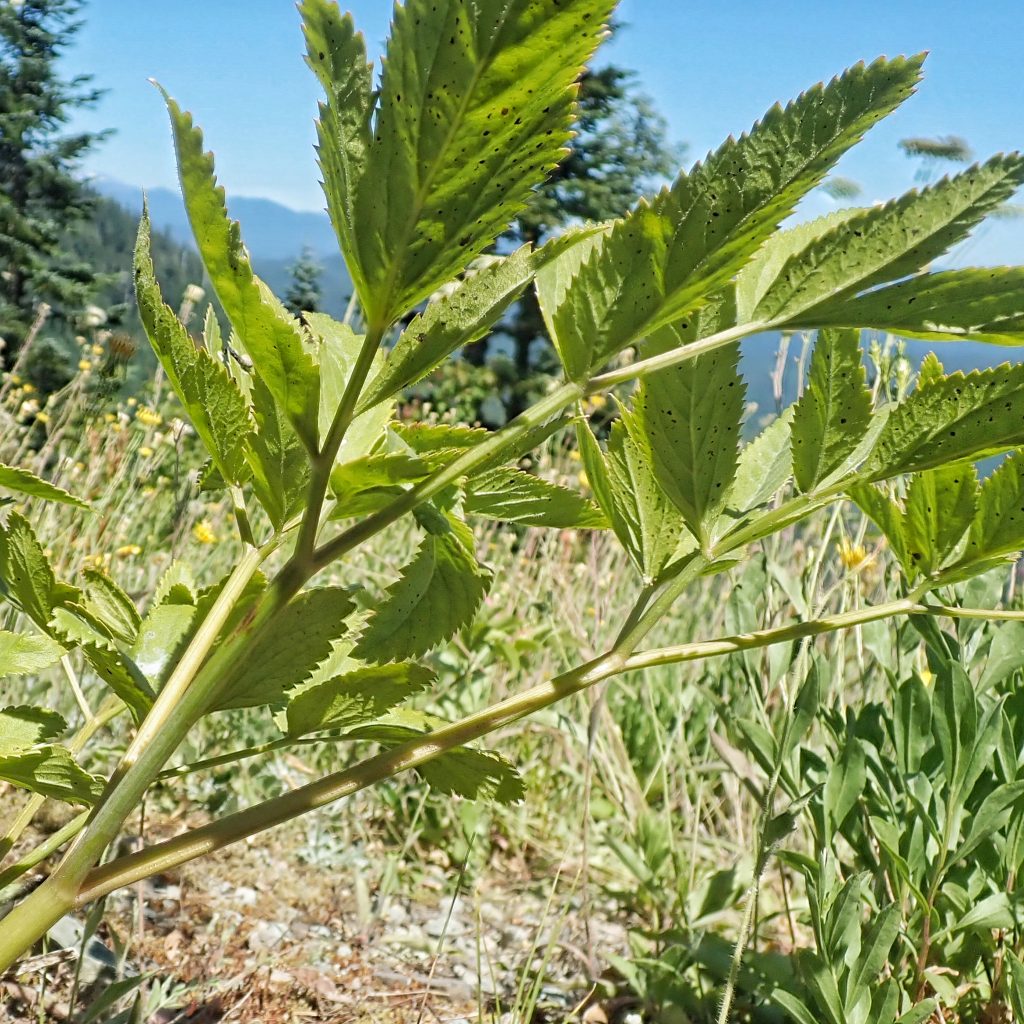
Description-Tall (up to 8’) thick stalked plant with umbels made up of clusters of cream to white or pinkish white flowers; stalk hollow, purplish, shiny, with multiple branches; leaves pinnately divided, leaflets coarsely toothed, leaf rachis (stem) abruptly bent at lowermost leaves; up to 60 globular clusters of flowers per umbel; lacks a taproot.
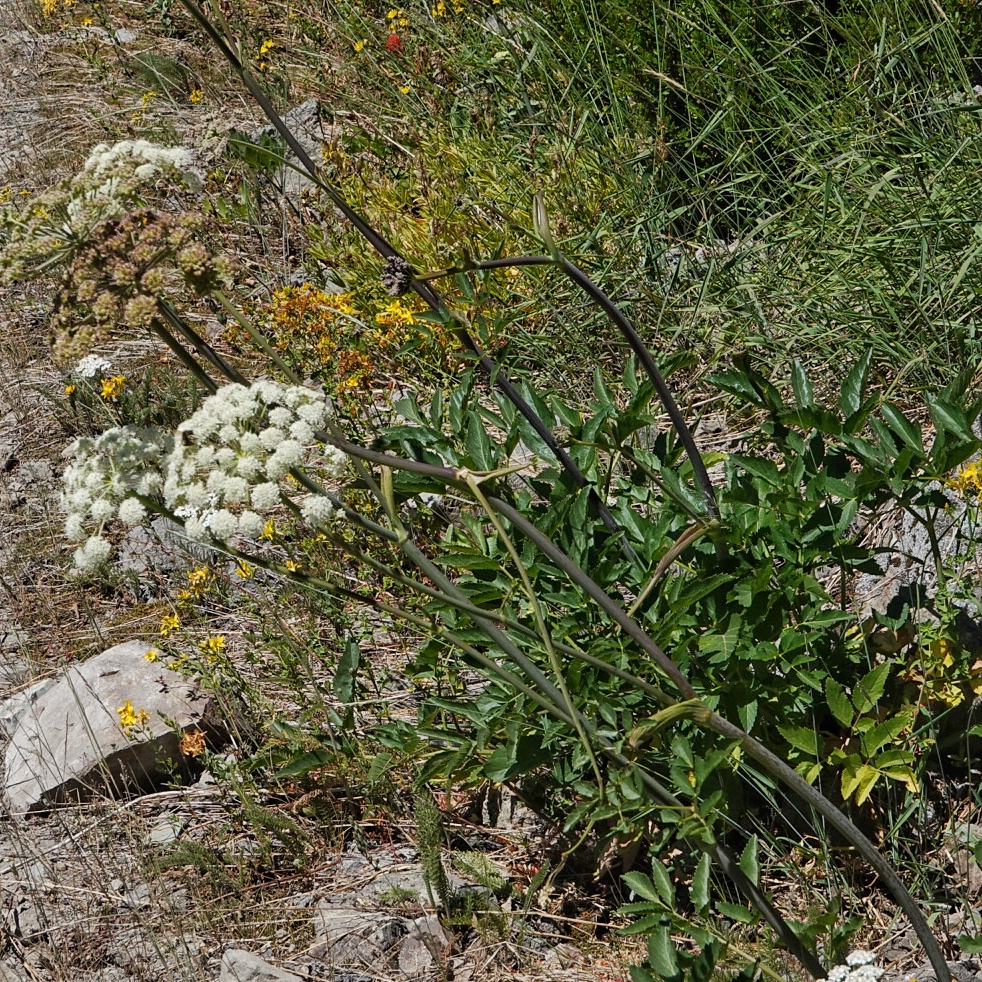
Similar species– Other Angelica spp. don’t have the sharply bent leaf rachis; Heracleum maximum (cow parsnip) has huge, simple leaves; Conium maculatum (poison hemlock) has lacy leaves, smaller and less flower clusters per umbel, and has mottled or streaked purple stalks; the highly toxic Cicuta douglasii (water hemlock) lacks bent rachis, has a large taproot, smaller and fewer flower clusters, and the stem is grayish green rather than purple.
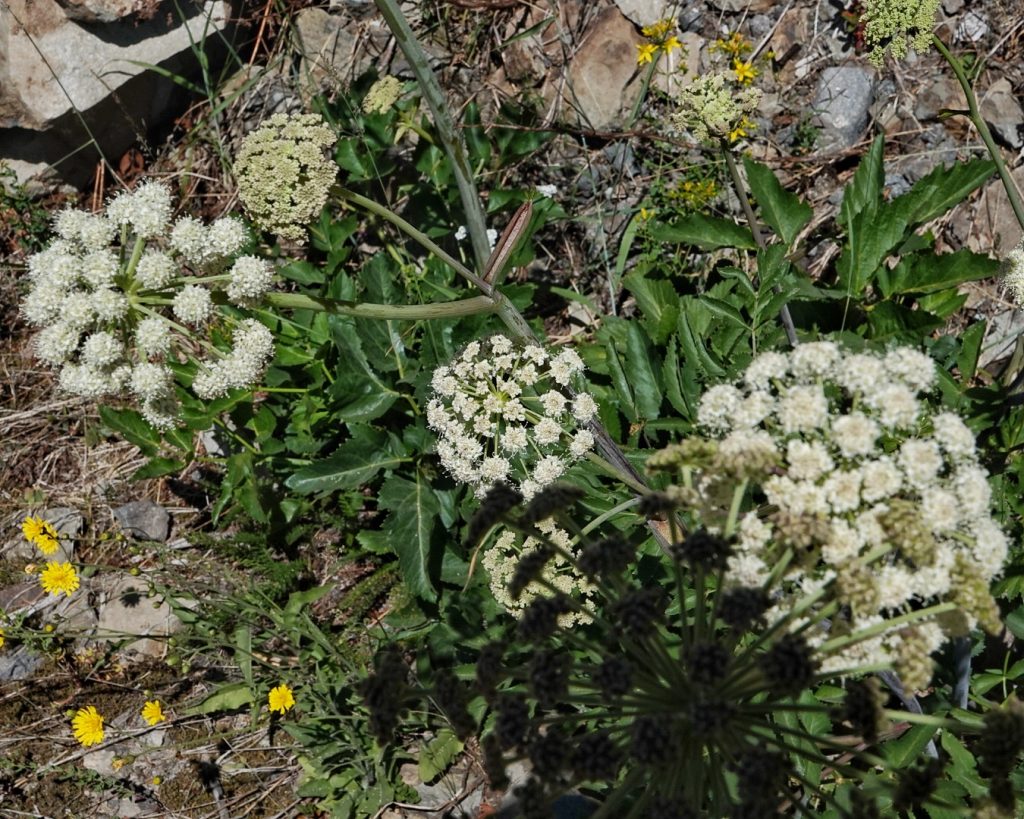
Habitat-They say wet meadows, bogs and streambanks, but I found these in rocky soil at the crest of a ridgeline at 4,000’ elevation; up to 5,400’ elevation.
Range-Northern Asia and western North America; primarily west of the Cascades crest and into the Columbia River Gorge in our region.
Reproductive timing-July to September
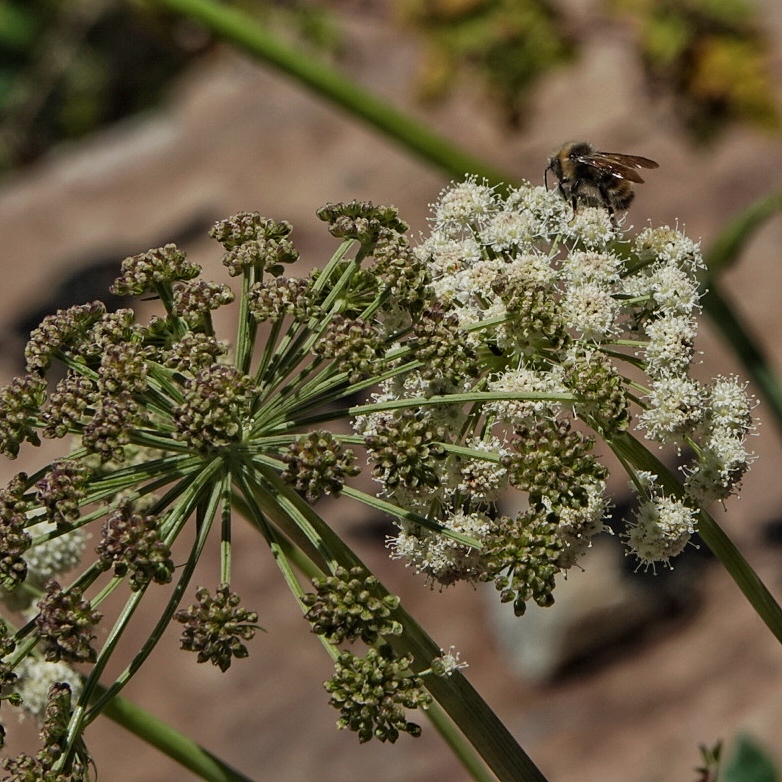
Eaten by– Several members of the leaf mining fly genus Phytomyza have been found on this species; also probably utilized as a larval host by shield bugs in the genus Elasmostethus; bears seem to be fond of this plant; if my experience on Sunday is a valid indication then bumblebees love these flowers, and become very preoccupied when feeding at them.
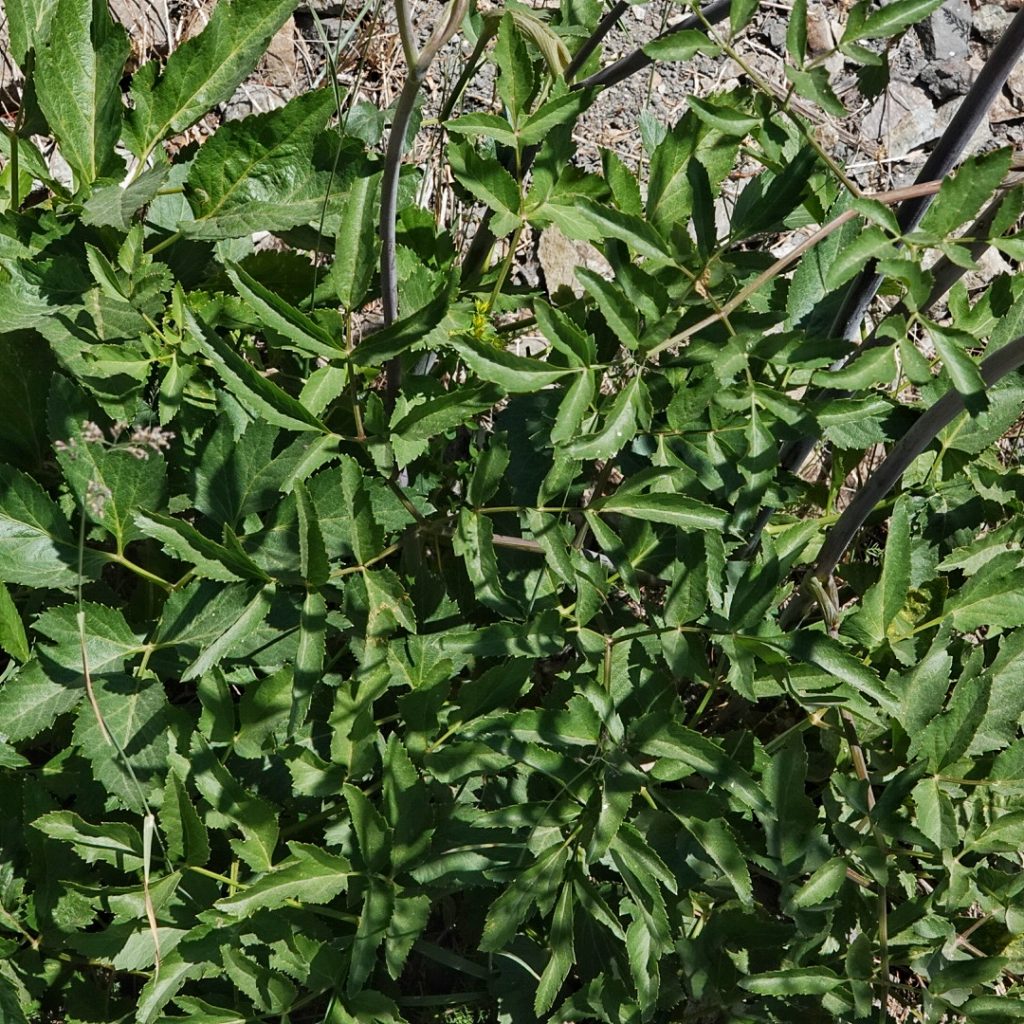
Etymology of names–Angelica is from the Latin for ‘angel’, and refers to the the usefulness of some plants in this genus for making medicine or liqueurs; the specific epithet genuflexa is from the Latin for ‘bent like a knee’, and refers to the abrupt bend in the leaf rachis.
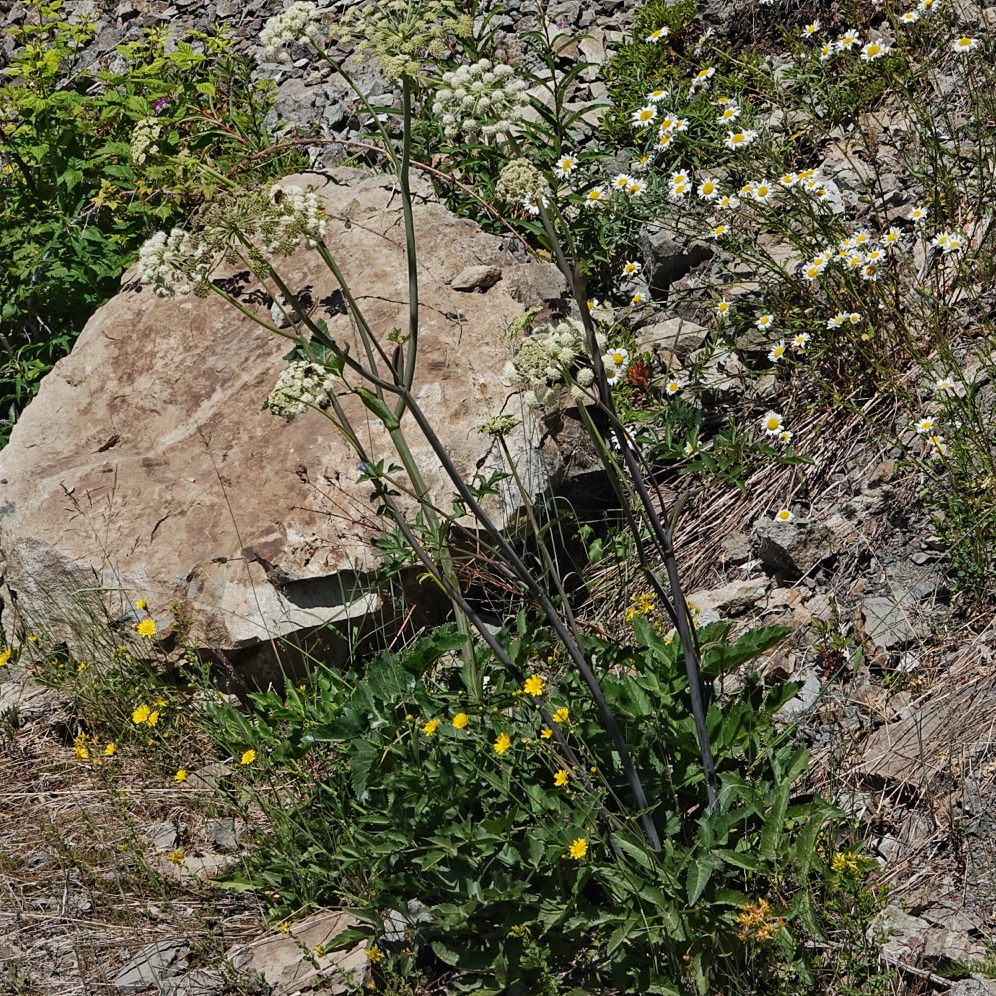
http://science.halleyhosting.com/nature/gorge/5petal/pars/angelica/genuflexa.htm
OregonFlora Angelica genuflexa
BRIT – Native American Ethnobotany Database
https://eflora.neocities.org/Angelica%20Sp.html
Angelica genuflexa | Kneeling Angelica | Wildflowers of the Pacific Northwest
http://biology.burke.washington.edu/herbarium/imagecollection/taxon.php?Taxon=Angelica%20genuflexa
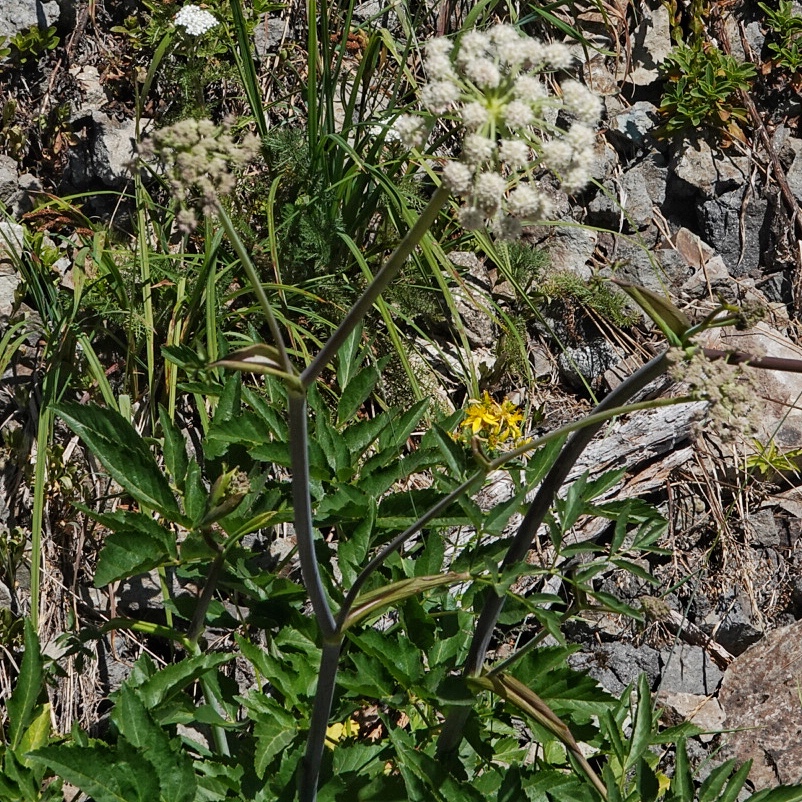
Cool! Kneeling Angels! Very interesting! Thank you ☺️